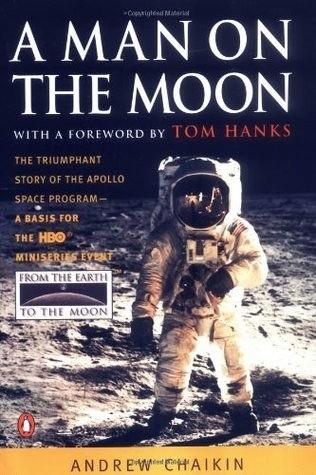
A Man on the Moon
by
Andrew Chaikin
Published 1 Jan 1994
The gloves were clumsy, and it was especially difficult for Armstrong to manipulate a camera or grasp a geologic hammer. Simply opening or closing his hand was like squeezing a tennis ball. As he reached into a pocket on his space suit thigh and pulled out a collapsible long-handled scoop, technicians with headphones could hear his controlled but labored breathing. “We’re beginning the contingency sample,” Armstrong said. “I have the collector . . Standing at the sidelines, a fully suited Buzz Aldrin watched his commander at work and waited for the proper moment to join him. It had been decided in the summer of 1968 that the first landing mission would feature a single moonwalk; by February 1969 its duration had been decided at about 2 hours and 40 minutes.
…
Heavy and light were redefined: his space-suited body, 348 pounds on earth, now weighed only 58 pounds. It was almost familiar—the simulations were that good— and it was even easier to move around than he had expected. He knew that the first order of business was to collect a small bag of soil, called the contingency sample, that would serve as the scientists’ hedge against an aborted moonwalk. But he would do that in sunlight, and he wanted to take care of getting a Hasselblad down to the surface while his eyes were still adapted to the darkness. This he accomplished with some effort as he and Aldrin operated a special conveyor line.
…
“It has a stark beauty all its own,” he said, excitement finally invading his voice. It was beautiful. It had the serenity of the high desert of Edwards, only here was the ultimate desert, complete in its stillness, and in its starkness. When he turned, he saw the same peculiar transformation from bright tan to ashen gray he’d seen from the LM windows. And when he held the contingency sample in his hand, the mystery of the moon’s color deepened: The soil in the bag was almost black, like powdered graphite. Holding the now unneeded collector handle, Armstrong considered throwing it like a javelin, but thought better of it, and instead gave it an underhand toss. It sailed away on a long, lazy trajectory, spinning in slow motion in the sunlight and traveling an impossibly long distance before landing in the dust.
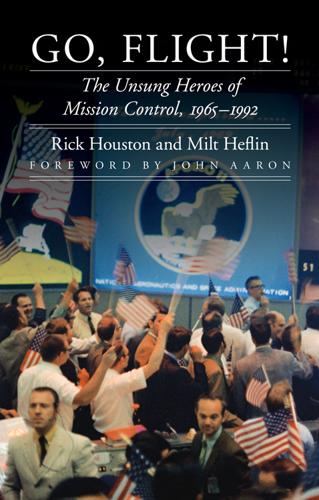
Go, Flight!: The Unsung Heroes of Mission Control, 1965-1992
by
Rick Houston
and
J. Milt Heflin
Published 27 Sep 2015
McCandless said little in those first few minutes but finally broke onto the loop to remind Armstrong about scooping up a contingency sample of lunar rocks and dust. It would have been unthinkable had an emergency forced Armstrong back into the LM without at least a few examples for the rock hounds back on Earth to study, but humanity’s first moonwalker initially concentrated on describing the surface and a panoramic series of photographs of the landing site. McCandless attempted to bring Armstrong back around to the chore. Neil, we’re reading you loud and clear. We see you getting some pictures and the contingency sample. Just a few seconds later, after a prompt from Charlesworth, McCandless tried again.
…
Just a few seconds later, after a prompt from Charlesworth, McCandless tried again. Neil, this is Houston. Did you copy about the contingency sample? Armstrong responded by telling McCandless that he would get to the sample as soon as he finished the panorama, and he did just that. That was exactly what it meant to be the only person in the world talking to men walking on the surface of another. “The job of the capcom is to help the flight crew and keep quiet, unless you have to say something,” McCandless said. “It was their show. My job was to communicate, keep them on a timeline, and make sure they didn’t forget something. It was a team effort.”
…
There was a lot of pressure to get them to call off the quest because of the time, and come back to the LM.” Shepard had one more surprise in store when he and Mitchell got back to the LM. An avid golfer, he dropped two balls into the dust of the landing site. Houston, while you’re looking that up, you might recognize what I have in my hand as the handle for the contingency sample return. It just so happens to have a genuine six iron on the bottom of it. In my left hand, I have a little white pellet that’s familiar to millions of Americans. I drop it down. Unfortunately, the suit is so stiff, I can’t do this with two hands, but I’m going to try an old sand trap shot here.
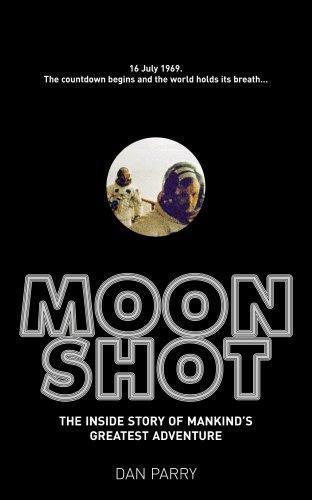
Moonshot: The Inside Story of Mankind's Greatest Adventure
by
Dan Parry
Published 22 Jun 2009
Buzz used the LEC to lower the camera down to the surface, and once he had retrieved it Neil secured it to a mount on the remote control unit on his chest. Armstrong: 'I'll step out and take some of my first pictures here.' Mission Control: 'Roger. Neil, we're reading you loud and clear. We see you getting some pictures and the contingency sample.' After taking a series of panoramic pictures while standing at the bottom of the ladder, Armstrong left the shadow of the LM and walked ten feet over to a sunlit area. Here, within the view of the 16mm film camera in Buzz's window, Neil took a tool from a pocket on his left leg and collected an initial sample of dust.
…
Here, within the view of the 16mm film camera in Buzz's window, Neil took a tool from a pocket on his left leg and collected an initial sample of dust. He deposited the material into a bag, which he then returned to his pocket. If the EVA ended early, Armstrong still hoped to be able to bring home a small selection of material. Armstrong: 'This is very interesting. It's a very soft surface, but here and there where I plug with the contingency sample collector, I run into a very hard surface. But it appears to be a very cohesive material of the same sort. I'll try to get a rock in here. Just a couple.' Armstrong: 'It has a stark beauty all its own. It's like much of the high desert of the United States. It's different, but it's very pretty out here.
…
Smiling and giggling like schoolboys, Neil, Buzz and Michael warmly congratulated each other and joked about the difficulties that had caused so much anxiety and which had now been successfully completed.18 Later, Buzz returned to Eagle, and telling Mike to 'get ready for those million-dollar boxes' he passed the two sample containers through the tunnel. These were then zipped up in white cloth bags before being stored in the lower equipment bay. Since they had been sealed in the vacuum of space Michael was unable to open them, but Neil showed him the contingency sample so that he could see the dark powder for himself. 'Sort of like wet sand,' was his first impression.19 As part of their preparations to leave lunar orbit, the crew collected rubbish, urine bags and items they no longer needed and dumped everything inside the LM. Eagle was to be jettisoned and left to freely coast around the Moon.
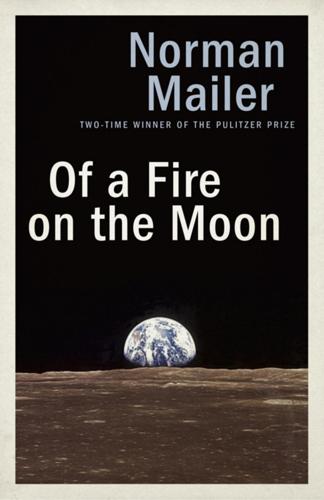
Of a Fire on the Moon
by
Norman Mailer
Published 2 Jun 2014
Thus if something unforeseen were to occur, if the unmentionable yak or the Abominable Snowman were to emerge from a crater, if the ground began to rumble, if for any reason they had to reenter the Lem and take off abruptly, they would then have the chance to return to earth with at least one rock. This first scoop of moon stone and moon dust was called the contingency sample, and it was one of Armstrong’s first tasks, but he seemed to have forgotten it. The Capcom reminded him subtly, so did Aldrin. The Capcom came back again: “Neil, this is Houston. Did you copy about the contingency sample? Over?” “Rog,” said Armstrong, “I’m going to get to that just as soon as I finish this picture series.” Aldrin had probably not heard. “Okay,” he asked, “going to get the contingency sample now, Neil?” “Right!” Armstrong snapped. The irritability was so evident that the audience roared with laughter—don’t we laugh when we glimpse a fine truth and immediately conceal it?
…
Behind them was the memory of the blast-off, the Kapton and all the other loose-wrapped plastic insulations of the descent stage being blown in all directions, far out in the bulletlike trajectories of the moon, all that plastic, silver and gold debris, and behind them—first refuse of the first moon city—was already the handle of the rock contingency sample, the TV camera and its tripod, the staff for the solar wind experiment, the passive seismometer, the closeup camera, the Laser Ranging Retro-Reflector and its packing materials and brackets—there had been over a hundred brackets and they were now strewn on the moon ground—and there were two backpacks of the PLSS also left behind and overshoes, and tramped ground for a hundred feet around the descent stage, ten thousand prints of the marks of their boots on top of other marks of their boots, messy as a bivouac where troops have been milling in the rain.
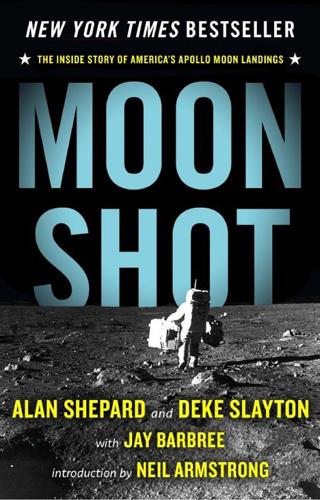
Moon Shot: The Inside Story of America's Apollo Moon Landings
by
Jay Barbree
,
Howard Benedict
,
Alan Shepard
,
Deke Slayton
and
Neil Armstrong
Published 1 Jan 1994
Then, he looked down, studied the lunar soil beneath his boots and squatted. A gloved hand gathered several ounces of rock and dirt and stuffed the small, invaluable collection of the moon in a suit pocket. If something should go wrong, and he had to scurry back inside Eagle, at least they would have a tiny sample of lunar soil. He managed a smile as he tucked the contingency sample safely away, and with their lunar lander systems hitting on all cylinders, Buzz was eager to follow. Fifteen minutes passed and Mission Control gave Aldrin the “Go.” He did not hesitate. He climbed down the ladder, stopping only when his boots were on the moon. It had happened as promised.
…
It’s clear that there was no fraud. As the clock ticked away, Neil put aside his checklist, awed by the beauty of the alien landscape. He took a long, slow look at the moon’s surface. “It’s a very soft surface,” Neil radioed back to Mission Control. “But here and there where I bored with the contingency sample collector, I ran into a very hard surface. It appears to be a very cohesive material of some sort.” What he described astounded and fascinated listeners around the world. “It has a very stark beauty all its own,” he said slowly. “It’s like much of the high desert areas of the United States.
…
From a suit pocket he withdrew a small metal flange and carefully attached it to the long aluminum handle of the collector with which he’d picked up small rock samples. In Mission Control eyes were riveted on the screen. What was Shepard going to do now? “Houston,” he paused for effect, “you might recognize what I have in my hand . . . the handle for the contingency sample. It just so happens to have a genuine six-iron on the bottom.” Controllers gaped. Shepard reached into a pouch of his suit and held up a round object for the world to see. “In my left hand I have a little white pellet that’s familiar to millions of Americans.” “It’s a golf ball!” came a yell from a controller.

Chasing New Horizons: Inside the Epic First Mission to Pluto
by
Alan Stern
and
David Grinspoon
Published 2 May 2018
BECOMING FAIL-SAFE Because the possibility of lethal hazards at Pluto had become real, Alan wanted the New Horizons team to have something to show for all their work if the spacecraft was lost before it could complete the flyby and send its close-approach data to Earth. The solution to this challenge was called the “fail-safe” data transmission. When he conceived it, Alan likened it to astronaut Neil Armstrong’s “contingency sample” collection, the first thing Armstrong did after stepping onto the Moon in 1969. Then the logic was to have something to show scientifically for the mission of Apollo 11 in case something went immediately wrong, and he and Buzz Aldrin had to suddenly abandon their moonwalk before more comprehensive lunar sampling could take place.
…
Some complained, but as mission PI, Alan’s calculus was different: There just wasn’t any way I was going to face NASA and the press if we lost New Horizons without having something important to show scientifically from the flyby. And I also wasn’t going to put our team in the position of coming up completely empty if that happened, and of saying we hadn’t thought through the chance of failure and collected our own “contingency sample.” So the fail-safe data transmission became a part of the plan; as it later turned out, its best images were so good that they led the newspaper and web stories the day after flyby. PLANNING AGAINST A BLACK SABBATH The next part of the hazards effort was spent developing plans to use the onboard LORRI telescopic imager to look for rings or new moons as New Horizons approached Pluto.
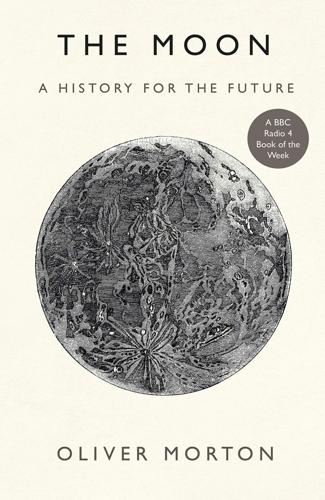
The Moon: A History for the Future
by
Oliver Morton
Published 1 May 2019
[Laughs] Does that look neat! It can’t be any further than 600 feet from here. How about that? —Well planned, Pete. 115:27:27—NOT FALLING OVER —Say, Houston; one of the first things that I can see, by golly, is little glass beads. I got a piece about a quarter of an inch in sight, and I’m going to put it in the contingency sample bag, if I can get it. I got it. Am I really leaning over, Al? —You sure are. On Earth, you’d fall over, I believe. —Huh? —On Earth, you’d fall over leaning that far forward. —It seems a little weird, I’ll tell you. Don’t think you’re going to steam around here quite as fast as you thought you were. 137:39:26—CONTENTMENT —We’re just sitting here now; we’ve got the spacecraft all squared away.
…
Al and I look just like a couple of bituminous coal miners right at the moment. [Silence] —But we’re happy . . . APOLLO 14: FRA MAURO On the Moon: Al Shepard and Edgar Mitchell In lunar orbit: Stuart Roosa TIME SINCE LAUNCH 135:08:17 —Houston, while you’re looking that up, you might recognize what I have in my hand is the handle for the contingency sample return; it just so happens to have a genuine six iron on the bottom of it. In my left hand, I have a little white pellet that’s familiar to millions of Americans. I’ll drop it down. Unfortunately, the suit is so stiff, I can’t do this with two hands, but I’m going to try a little sand-trap shot here.
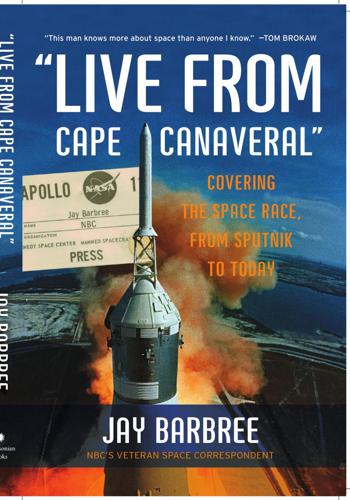
"Live From Cape Canaveral": Covering the Space Race, From Sputnik to Today
by
Jay Barbree
Published 18 Aug 2008
Shepard had let me in on his secret. I turned to my stunned co-anchor. “Russ, have you ever wondered how far an average golfer could hit a ball in lunar gravity? Well, Mr. Ward, you’re about to find out.” “Houston,” Shepard paused for effect, “you might recognize what I have in my hand…the handle for the contingency sample. It just so happens to have a genuine six-iron on the bottom.” Those in Mission Control were now laughing. Shepard reached into a pouch of his suit and held up a golf ball. “In my left hand I have a little white pellet that’s familiar to millions of Americans.” The flight controllers grinned.
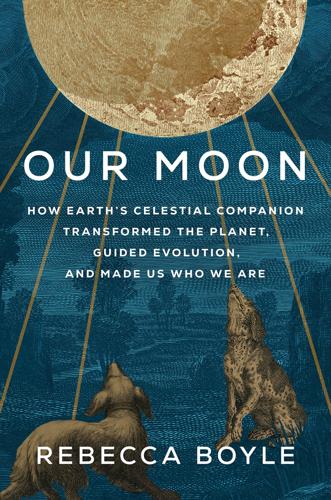
Our Moon: How Earth's Celestial Companion Transformed the Planet, Guided Evolution, and Made Us Who We Are
by
Rebecca Boyle
Published 16 Jan 2024
Unlike Earth dust, which is mostly made of organic material, Moon dust is all pulverized rock—and no water or wind exists to soften the dust grains’ edges. It was like breathing in sandpaper. But the astronauts were lucky that this was nothing more than a nuisance. NASA scientists had warned the astronauts that Moon dust might be reactive in oxygen. Aldrin and Armstrong were told to be cautious about their contingency sample, a small scoop of Moon that Armstrong tucked into his pocket moments after stepping out of the Eagle. After coming back inside, Aldrin and Armstrong watched the dust carefully as the Eagle cabin pressurized. If anything started to smolder, they were supposed to open the hatch and throw it out.

Shoot for the Moon: The Space Race and the Extraordinary Voyage of Apollo 11
by
James Donovan
Published 12 Mar 2019
Visibility was not a problem; with the low, blinding sun to the east and the bright Earth above, the lighting was “like being on a sandy athletic field at night that is very illuminated with flood lights,” Armstrong would write later. Using a “Brooklyn clothesline” pulley, Aldrin sent down a Hasselblad color camera to Armstrong, who began taking photos. Then Armstrong used a handled scooper with a bag on the end to collect some rocks and soil, a contingency sample in case the EVA had to be cut short. Twenty minutes after Armstrong’s first step, Aldrin descended the ladder and joined him. “Beautiful view!” he said, standing on the footpad. The former pole vaulter jumped back up to the last rung just to show how easy it was. “Isn’t that something? Magnificent sight out here,” Armstrong said.
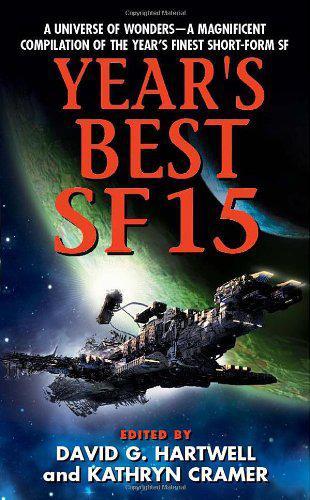
Year's Best SF 15
by
David G. Hartwell; Kathryn Cramer
Published 15 Aug 2010
Nevertheless, the first seven-hour jaunt went by the numbers. Flag erected. Rover deployed. Scientific instruments sited. After what turned out to be twenty hours of wakefulness and extreme stress, neither astronaut needed a sleeping pill to sack out in the cramped, uncomfortable Pathfinder. The next day—the public relations ceremonies and contingency sampling behind them—they were able to board the rover quickly and be on the road, just the way the Alpha loved to fire up a T-38 aircraft and bolt into the Texas sky. This was to be their long traverse, if circumstances and terrain permitted, reaching a straight-line distance from Pathfinder of six kilometers.